
Usermaatre Heqamaatre Setepenamun Ramesses IV was the third pharaoh of the Twentieth Dynasty of the New Kingdom of Ancient Egypt. He was the second son of Ramesses III and became crown prince when his elder brother Amenherkhepshef died aged 15 in 1164 BC, when Ramesses was only 12 years old. His promotion to crown prince:
is suggested by his appearance in a scene of the festival of Min at the Ramesses III temple at Karnak, which may have been completed by Year 22 [of his father's reign].

Userkare Khendjer was a minor king of the early Thirteenth Dynasty of Egypt during the Middle Kingdom. Khendjer possibly reigned for four to five years, archaeological attestations show that he was on the throne for at least three or four years three months and five days. Khendjer had a small pyramid built for himself in Saqqara and it is therefore likely that his capital was in Memphis.

Senusret I also anglicized as Sesostris I and Senwosret I, was the second pharaoh of the Twelfth Dynasty of Egypt. He ruled from 1971 BC to 1926 BC, and was one of the most powerful kings of this Dynasty. He was the son of Amenemhat I. Senusret I was known by his prenomen, Kheperkare, which means "the Ka of Re is created." He expanded the territory of Egypt allowing him to rule over an age of prosperity.

Nebtawyre Mentuhotep IV was the last king of the 11th Dynasty in the Middle Kingdom. He seems to fit into a 7-year period in the Turin Canon for which there is no recorded king.

Khasekhemre Neferhotep I was an Egyptian pharaoh of the mid Thirteenth Dynasty ruling in the second half of the 18th century BC during a time referred to as the late Middle Kingdom or early Second Intermediate Period, depending on the scholar. One of the best attested rulers of the 13th Dynasty, Neferhotep I reigned for 11 years according to the Turin King List.

Khaneferre Sobekhotep IV was one of the more powerful Egyptian kings of the 13th Dynasty, who reigned at least eight years. His brothers, Neferhotep I and Sihathor, were his predecessors on the throne, the latter having only ruled as coregent for a few months.
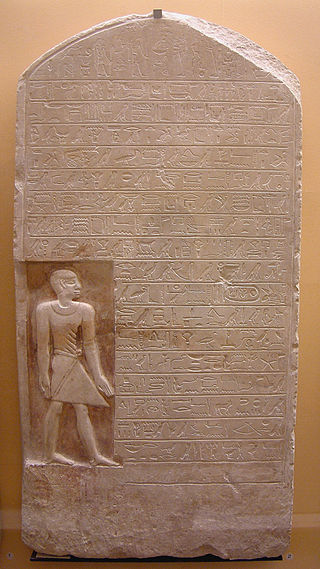
Ankhu was an Egyptian vizier during the early 13th Dynasty in the late Middle Kingdom. He is believed to have resided in Thebes in Upper Egypt.

Nubkhaes {nbw-ḫꜥ⸗s} was a queen in ancient Egypt during the Second Intermediate Period. Several of her family members were officials during the late 13th Dynasty. Her name means The Gold [=Hathor] appearsand she held the titles Great Royal Wife and the one united with the beauty of the white crown.

Aya was an ancient Egyptian king's wife of the early Thirteenth Dynasty.
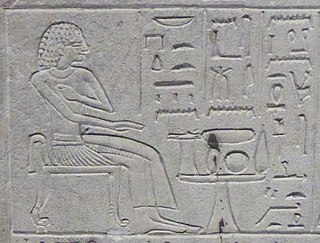
Senebi was an ancient Egyptian treasurer under the late 13th Dynasty kings Neferhotep I and Sobekhotep IV. Senebi belongs to the best attested officials of the 13th Dynasty.
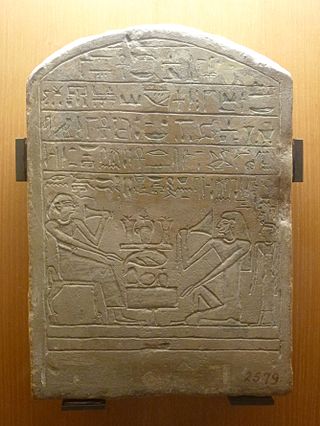
Senewosret-Ankh {s-n-wsrt-ꜥnḫ/snfrw} was an ancient Egyptian vizier of the Middle Kingdom, dating to the end of the Twelfth or to the beginning of the Thirteenth Dynasty.
This page list topics related to ancient Egypt.
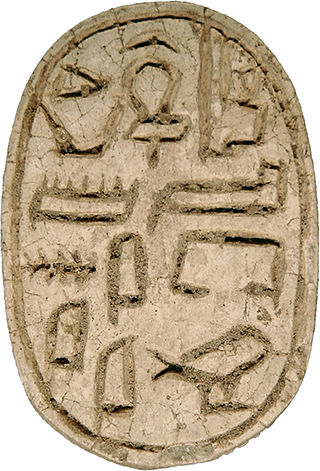
Ameny was an ancient Egyptian official of the 13th Dynasty with the title high steward. In this function he was the main administrator of the royal estates.
Merkawre Sobekhotep was an Ancient Egyptian king during the Second Intermediate Period.
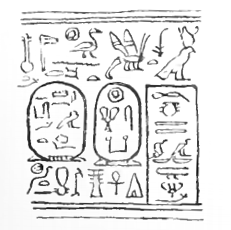
Sekhemkare Amenemhat Senebef was an Egyptian pharaoh of the early 13th Dynasty, often considered as the final part of the late Middle Kingdom or early Second Intermediate Period.

Haankhef was the father of the ancient Egyptian kings Neferhotep I, Sihathor, and Sobekhotep IV, who successively ruled Egypt during the second half of the 18th century BC as kings of the 13th Dynasty.

Aabeni was an ancient Egyptian official with the title high steward. He was one of the most important officials at the royal court in the early Thirteenth Dynasty.
Khakau was the brother of King Sobekhotep III of the Thirteenth Dynasty and part of a powerful family taking power in a time of political turmoil in Upper Egypt. Although not of royal birth, he was given the title of "king's son" by his brother.
Dedusobek Bebi was a high official of the late Thirteenth Dynasty of ancient Egypt. He became the "Great Scribe of the Vizier". This position was directly under the Vizier acting as a deputy.
Rehuankh was an Ancient Egyptian high official associated with kings Neferhotep I and Sobekhotep IV of the Thirteenth Dynasty during the Middle Kingdom. Rehuankh is known from a high number of sources, making him one of the best attested officials of the late Middle Kingdom.















